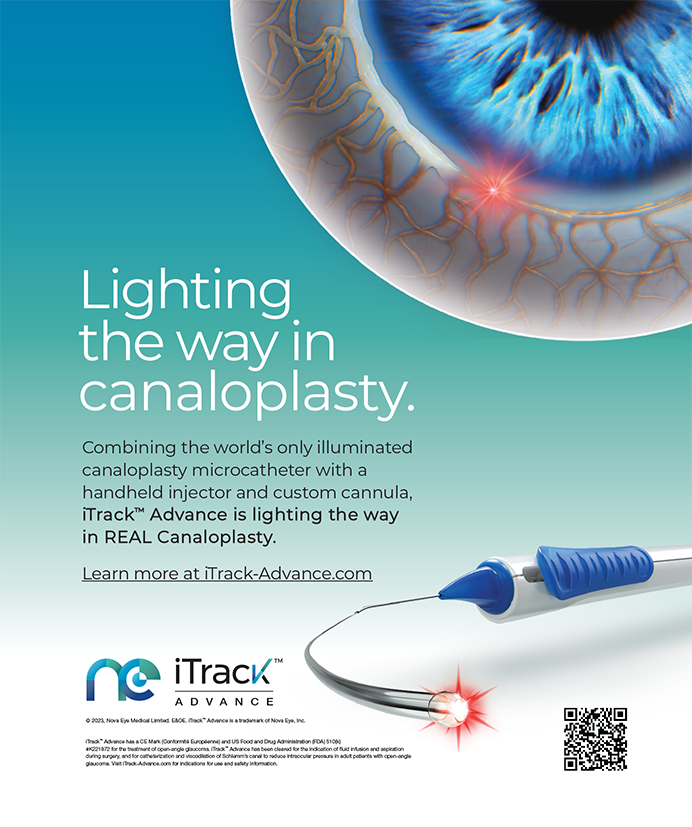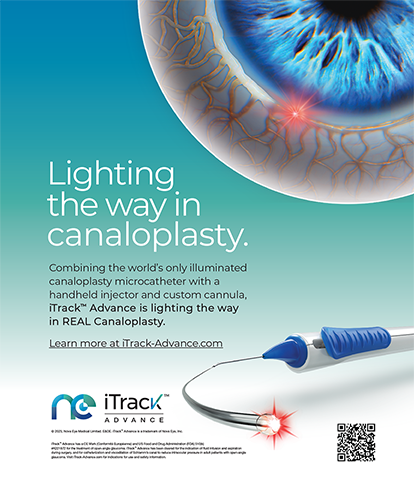What factors, data points, or measurements would prompt you to perform LASIK, PRK, another refractive procedure, or no surgery on eyes with a corneal thickness of 485 µm or less?
ERIC D. DONNENFELD, MD
I consider the risk factors for ectasia when deciding whether or not to perform LASIK or PRK on eyes that have a pachymetry reading of 485 µm. I steer away from LASIK when the corneal topography reveals the presence of forme fruste keratoconus, skew deviation, or keratometric readings greater than 47.00 D. Other variables that I evaluate include age, the thickness of the residual stromal bed, and the degree of myopia. In general, I try to preserve a stromal bed of at least 280 µm in patients under the age of 25 and in those whose corneas are thinner than 500 µm preoperatively. The ability to create planar flaps with a femtosecond laser and perform riboflavin/UV cross-linking in the rare event of keratectasia have reduced my concern about patients' developing ectasia after LASIK.
J. BRADLEY RANDLEMAN, MD
My primary concern when evaluating a patient for refractive surgery—assuming an otherwise normal physical examination—is the corneal topographic pattern. Although a corneal thickness of 485 µm may be normal, I have a low threshold for pursuing a treatment option other than LASIK in these eyes. If a topographic abnormality is present, I consider PRK for lower refractions if the topographic pattern is mildly suspicious with, for example, an asymmetric bowtie pattern. For higher refractions, I consider implanting a phakic IOL. My second concern is the patient's age. I hesitate to offer surgery to a young patient with a thin cornea and any topographic pattern that deviates from normalcy. I use the Ectasia Risk-Scoring System for these patients, because it takes these multiple factors into account in a weighted fashion.1
Stephen G. Slade, MD
The case of a patient with a corneal thickness of 485 µm is one that all of us face from time to time. These patients should not be ruled out as candidates for LASIK or sub-Bowman's keratomileusis (SBK). Studies have found no increased risk for patients with a corneal thickness of 485 µm who had LASIK or SBK.2 Surface ablation could be a treatment option, but many experts believe that the cornea is just as strong after SBK as it is after surface ablation. Also, Bowman's layer is preserved with SBK. Although there are no medical implications to using surface ablation on a thinner cornea, there might be legal ones. Of course, I would only consider these treatments if the patient had an otherwise normal examination, including topography and slit-lamp findings, as well as a stable refraction.
William B. Trattler, MD
Preoperative corneal thickness is not an independent risk factor for post-LASIK ectasia. Thin corneas may actually be stronger than thicker corneas. A recent study found that corneal collagen crosslinking makes corneas stronger, stiffer, and thinner rather than thicker.3 Also, four peer-reviewed studies found that patients with thin corneas and normal topographies who underwent LASIK did not develop ectasia.4-7
I carefully evaluate the corneal topography of eyes with thin corneas; an abnormal topography plus a thin cornea is a concern. I also carefully evaluate young patients who may not yet show topographic signs of early keratoconus. I leave a residual stromal bed of approximately 275 µm or greater, and I perform intraoperative pachymetry to confirm that the flap is not thicker than intended. Although J. Bradley Randleman, MD, found that patients with ectasia had thinner corneas on average than did a control group of LASIK patients,1,8 in my experience, the vast majority of cases of post-LASIK ectasia have occurred in patients with preoperative pachymetry readings of 500 µm or thicker. So patients with both thin and thick corneas are at risk for ectasia.
Section editor John F. Doane, MD, is in private practice with Discover Vision Centers in Kansas City, Missouri, and he is a clinical assistant professor for the Department of Ophthalmology, Kansas University Medical Center in Kansas City, Kansas. Dr. Doane may be reached at (816) 478-1230; jdoane@discovervision.com.
Eric D. Donnenfeld, MD, is a trustee of Dartmouth Medical School in Hanover, New Hampshire, and is a partner in Ophthalmic Consultants of Long Island in Rockville Centre, New York. Dr. Donnenfeld may be reached at (516) 766-2519; eddoph@aol.com.
J. Bradley Randleman, MD, is an associate professor of ophthalmology at the Emory Eye Center in Atlanta. Dr. Randleman may be reached at (404) 778-2733; jrandle@emory.edu.
Stephen G. Slade, MD, is a surgeon at Slade and Baker Vision in Houston. Dr. Slade may be reached at (713) 626-5544; sgs@visiontexas.com.
William B. Trattler, MD, is the director of cornea at the Center for Excellence in Eye Care in Miami. Dr. Trattler may be reached at (305) 598-2020; wtrattler@earthlink.net.
- Randleman JB, Woodward M, Lynn MJ, Stulting RD. Risk assessment for ectasia after corneal refractive surgery. Ophthalmology. 2008;115:37-50.
- Azar DT, Ghanem RC, de la Cruz J, et al. Thin-flap (sub-Bowman keratomileusis) versus thick-flap laser in situ keratomileusis for moderate to high myopia: case-control analysis. J Cataract Refract Surg. 2008;34(12):2073-2078.
- Stulting D. Results of a phase 3 US study on corneal collagen crosslinking: risk factors for ectasia and scoring systems course. Paper presented at: The 2009 ASCRS Symposium on Cataract, IOL and Refractive Surgery; April 6, 2009; San Francisco, CA.
- Binder PS; Analysis of ectasia after laser in situ keratomileusis: risk factors. J Cataract Refract Surg. 2007;33(9):1530-1538.
- Caster AI, Friess DW, Potvin RJ. Absence of keratectasia after LASIK in eyes with preoperative central corneal thickness of 450 to 500 microns. J Refract Surg. 2007;23(8):782-788.
- Kymionis GD, Bouzoukis D, Diakonis V, et al. Long-term results of thin corneas after refractive laser surgery. Am J Ophthalmol. 2007;144(2):181-185.
- Kremer I, Bahar I, Hirsh A, Levinger S. Clinical outcomes of wavefront-guided laser in situ keratomileusis in eyes with moderate to high myopia with thin corneas. J Cataract Refract Surg. 2005;31(7):1366-1371.
- Trattler W. Risk Factors for ectasia and scoring systems: practical approach. Paper presented at: The 2009 ASCRS Symposium on Cataract, IOL and Refractive Surgery; April 6, 2009; San Francisco, CA.


